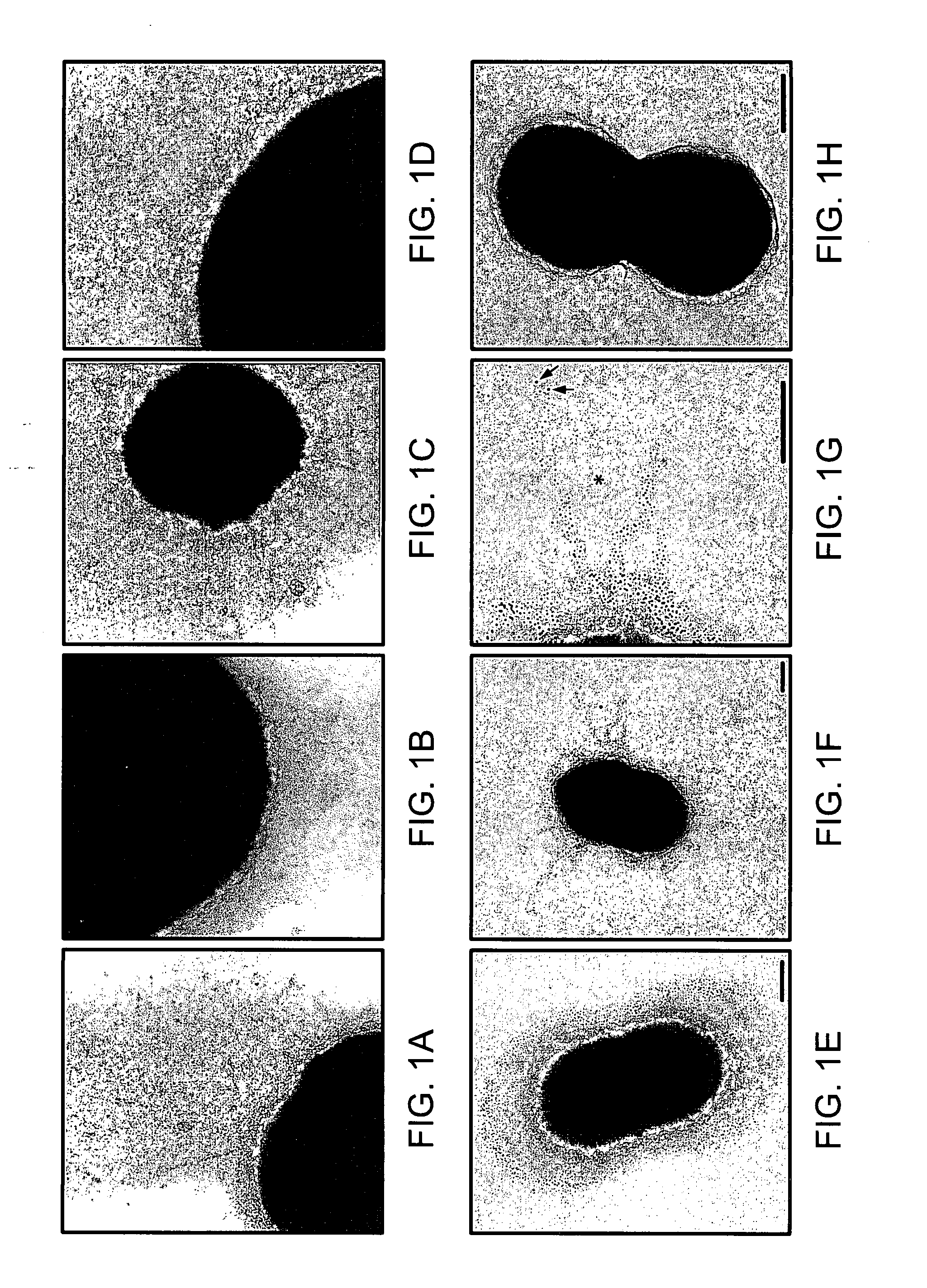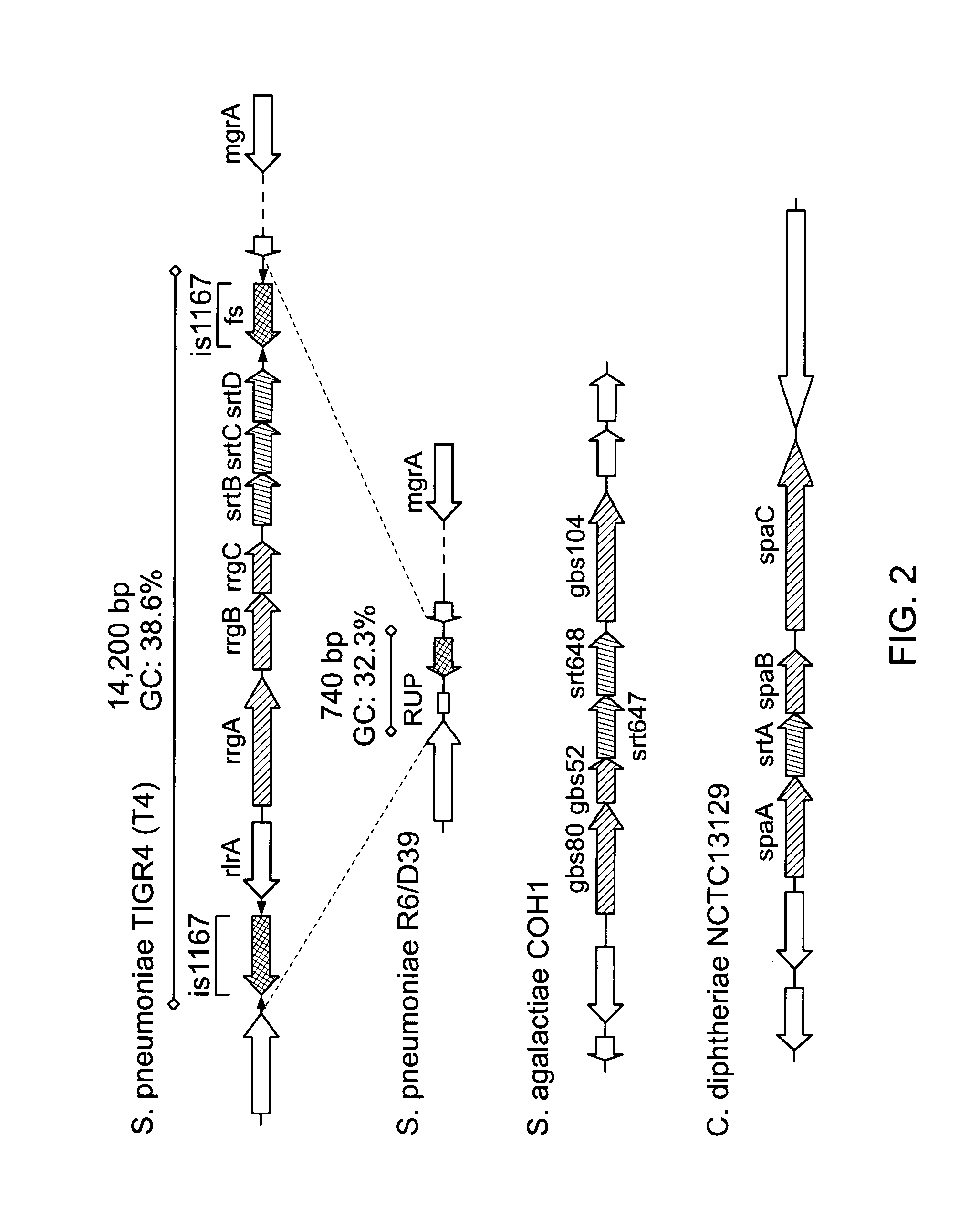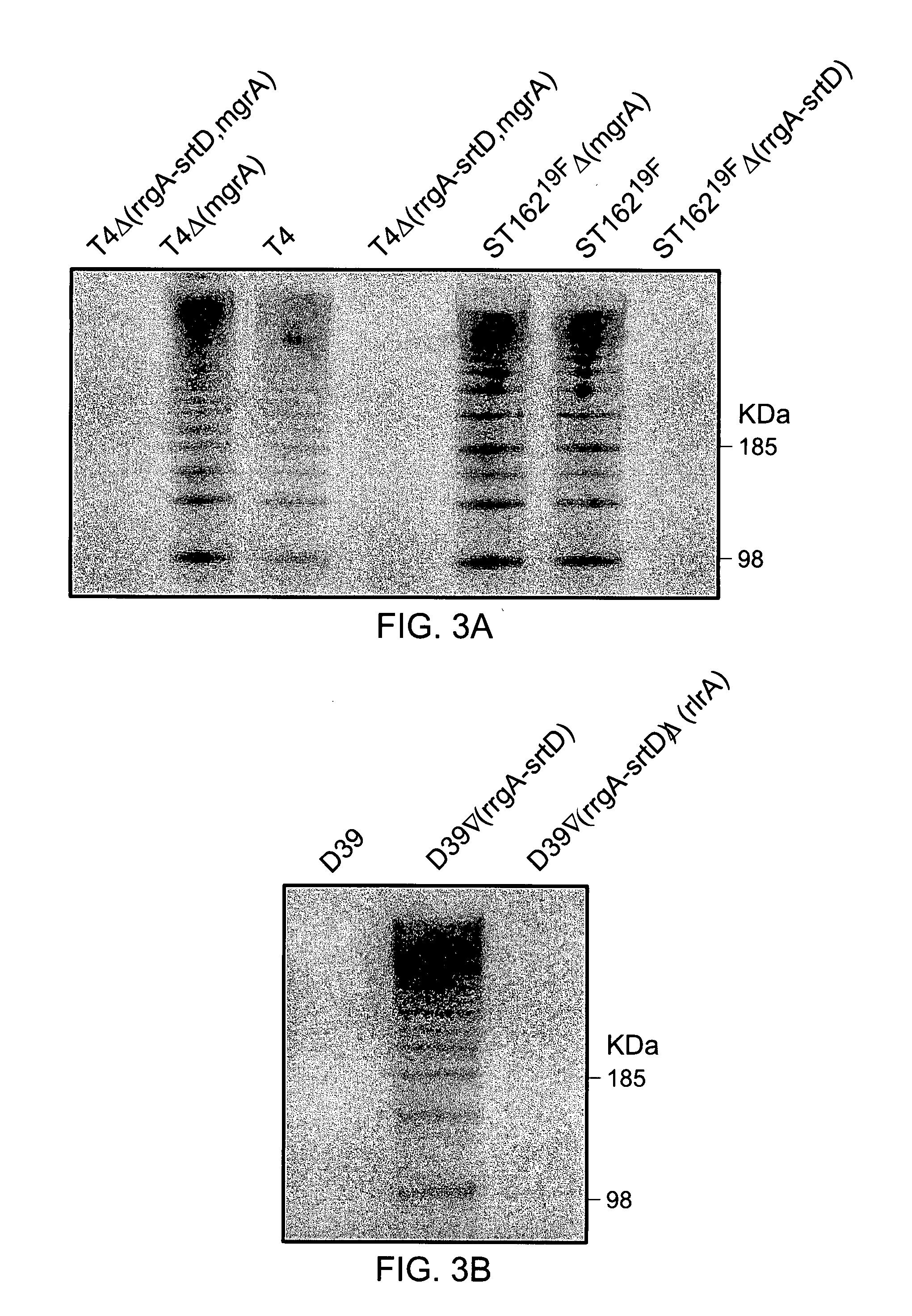Purification of bacterial antigens
- Summary
- Abstract
- Description
- Claims
- Application Information
AI Technical Summary
Benefits of technology
Problems solved by technology
Method used
Image
Examples
example 1
Materials and Methods
[0397] Construction of Pneumococcal Mutants
[0398] Pneumococcal strains and deletion mutants created in these backgrounds are described in Table 1. PCR ligation mutagenesis (23) was used to create knockout mutants of T4 and ST16219F. Fragments upstream and downstream of the target genes were amplified with specific primer pairs. The upstream fragments were constructed with ApaI sites and the downstream fragments with BamHI sites. Primers used for construction and screening of deletion alleles are listed in Table 2. The PCR products (1,000 bp) were digested with corresponding restriction enzymes, purified, and ligated with the erm cassette (1,306 bp) (GenBank accession no. AB057644) or the Kan-rpsL cassette, Janus (24) (1,368 bp) containing ApaI and BamHI sites. The ligation mix was then transformed as described in (25) into the recipient pneumococcal strain and plated on blood agar plates containing either erythromycin (1 μg / ml) or kanamycin (400 μg / ml). The co...
example 2
Evidence by Transmission Electron Microscopy for Pilus-Like Structures in Pneumococci
[0424] By transmission electron microscopy and negative staining, it was found that pneumococci cultivated for up to 16 hours on blood agar plates and in (C+Y) or (THY) medium express pilus-like structures. These structures were found on strain T4 (TIGR4), belonging to the highly invasive serotype 4 clone of multilocus sequence type ST205, as well as on a clinical isolate of type 19F, with multilocus sequence type 162 (strain ST16219F) (FIG. 1A). This 19F clone is associated with both carriage and invasive disease in humans, and has been shown to be an efficient colonizer of the respiratory tract of C57BL / 6 and BALB / c mice (5). Although a nonencapsulated mutant of T4 (T4R) was able to form pili, no pili were observed on the nonencapsulated laboratory strain R6.
example 3
The rlrA Islet in the Pneumococcal Genome Encodes Pili-Like Structures
[0425] Comparison of the spaABC operon from Corynebacterium diphtheriae (12) and adhesion islet 1 from group B streptococci (16) revealed a cluster of putative pilus genes within the T4 genome (FIG. 2). The pilus genes are located in the previously described Streptococcus pneumoniae rlrA pathogenicity islet (18, 19). The pneumococcal rlrA islet consists of seven genes of which rrgA, rrgB, and rrgC are predicted to encode LPXTG-containing microbial surface components recognizing adhesive matrix molecules (MSCRAMMs) that bind to components of the extracellular matrix of the host (20). In addition, the rlrA islet also contains genes for three sortases, srtB, srtC, and srtD, as well as rlrA (rofA-like regulator), a positive regulator of the gene cluster (18) (FIG. 2). The genomic islet is flanked by IS1167 containing inverted repeats, characteristic of mobile genetic elements (FIG. 2). The sequenced strain R6 and its...
PUM
| Property | Measurement | Unit |
|---|---|---|
| Fraction | aaaaa | aaaaa |
| Mass | aaaaa | aaaaa |
| Fraction | aaaaa | aaaaa |
Abstract
Description
Claims
Application Information
 Login to View More
Login to View More - R&D
- Intellectual Property
- Life Sciences
- Materials
- Tech Scout
- Unparalleled Data Quality
- Higher Quality Content
- 60% Fewer Hallucinations
Browse by: Latest US Patents, China's latest patents, Technical Efficacy Thesaurus, Application Domain, Technology Topic, Popular Technical Reports.
© 2025 PatSnap. All rights reserved.Legal|Privacy policy|Modern Slavery Act Transparency Statement|Sitemap|About US| Contact US: help@patsnap.com



